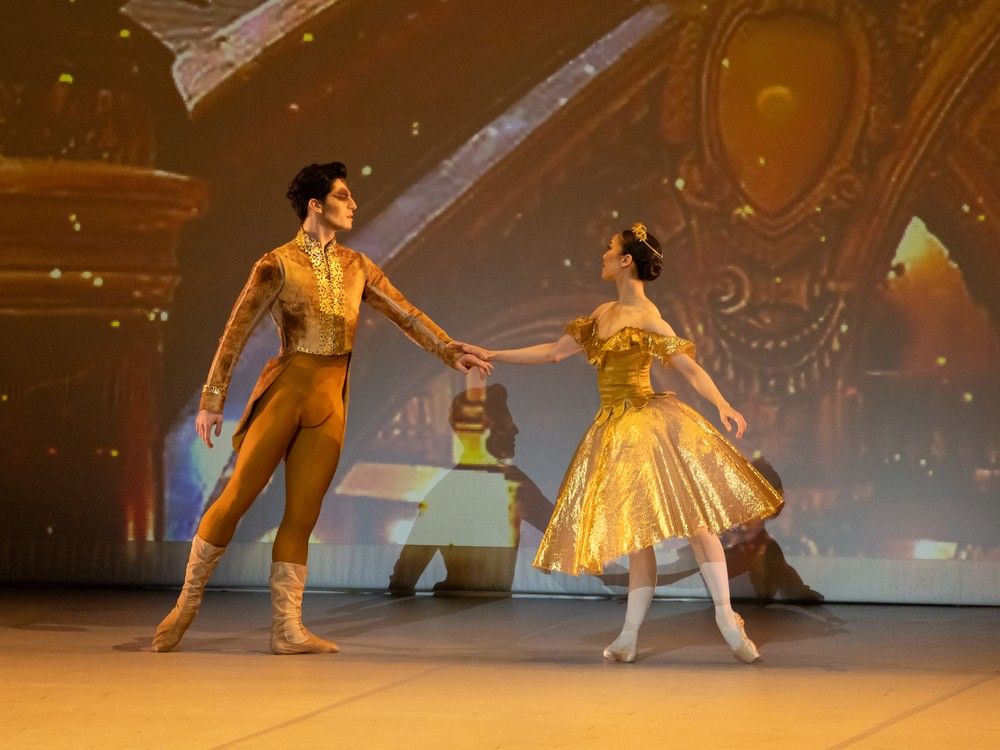ROM backtracks after trying to alter Palestinian artists’ work over ‘heightened sensitivities’

The Royal Ontario Museum has reversed its decision to change a travelling art exhibit about Palestinian-Muslim funerary practices after protests that included an 18-hour sit-in by the women who created it.
The Toronto museum says it wanted to change the exhibit, Death: Life’s Greatest Mystery, because of “heightened sensitivities” over the Israel-Hamas war.
Two days before it was supposed to open, ROM officials told the four Palestinian American women behind the exhibit about certain changes they wanted to make, according to artists Sameerah Hosam Ahmad and Malak Kanan.
“They highlighted the word ‘Palestine,’ and they highlighted the word ‘exiled,’ and they basically said ‘This is going to need to change for us to be able to show your work,'” Ahmad said. “This was very disturbing. This is the reality of what happened to our peoples.”
A ROM spokesperson said in a statement the proposed changes were in light of “the current heightened sensitivities around the Israel-Hamas conflict and the pain and suffering of all involved communities.”
The artists refused.
‘Even in death, we have no peace’
At a preview for ROM members on Oct. 27, Ahmad says, a painting depicting Islamic burial traditions had been taken down and the exhibit’s other component, an installation of personal items that showcase mourning rituals, had been displayed without any text to explain it.
Ahmad and Kanan say they were escorted to a back room where they were shown altered versions of the displays, with the word “Palestine” changed to “West Bank,” a cropped version of the painting and other changes.
For the artists, who had travelled to Toronto from the U.S. to see their exhibit, which was originally shown at the Field Museum in Chicago, the ongoing Israel-Hamas war is part of the reason why they found the changes to their work, centred on mourning the dead, particularly disturbing.
“Outside of grieving the 8,000 lives that we just lost, we’re also being censored. Even in death, we have no peace. We’re not really allowed to grieve,” Kanan said, referring to deaths in the Gaza Strip since the outbreak of the war in the wake of the Oct. 7 attacks by Hamas that killed more than 1,400 people and left more than 240 in the hands of Hamas as hostages.
The deaths in Gaza have since risen to more than 9,200, according to the Hamas-run Palestinian Health Ministry in Gaza.
The artists staged an 18-hour-long sit-in. Others protested outside the museum.
The museum closed the exhibit temporarily and later agreed to restore the displays to their original version. It reopens Friday with “some additional contextual labels and authorship credits.”
“ROM also apologized for the pain and frustration caused during this process,” the statement reads.

The suggested changes
The part of the painting that the museum took issue with, the artists say, shows a deceased Palestinian wearing a kuffiyya, or traditional headdress, traditional embroidery called tatreez, and two soldiers carrying a dead body.
The latter is meant to depict incidents of Israel holding dead Palestinians’ bodies for long stretches of time before returning them to their families.
“Muslim burial practices say that you need to bury the person as quick as possible,” Ahmad said. “The ROM suggestion for how to treat this part of the painting was to literally blur it out and to put a quote over it.”
The second display that was altered involves personal items from Palestinian families, including utensils that Ahmad’s father in Chicago uses to cook funeral meals whenever someone from his ancestral home village of Turmus Ayya dies or is killed.
“They had an issue with having the name of my village, ‘Turmus Ayya, Palestine’ on the panel … because it was acknowledging that Palestine is a place,” Kanan said.
Featured VideoNearly two million people are trapped in Gaza, and the region is running out of supplies. Founder of the International Network for Aid, Relief and Assistance, journalist Arwa Damon, talks to Adrienne Arsenault about the extraordinary challenge of getting help into Gaza and the dire impact on children.
The region of Palestine was partitioned by the UN between Arabs and Jews after the Second World War, setting off a regional conflict in which hundreds of thousands of Palestinians fled or were forced to flee.
Today, while the United Nations recognizes Palestine only as a “non-member observer state,” more than 135 countries recognize it as an independent state.
Canada does not but does officially support the “Palestinian right to self-determination and supports the creation of a sovereign, independent, viable, democratic and territorially contiguous Palestinian state as part of a comprehensive, just and lasting peace settlement.”
According to Ahmad, museum staff also said they would alter a corresponding display of Jewish funeral practices, also part of the Field Museum exhibit, “on principle.”
“The ROM clearly doesn’t understand … we are in solidarity with Jewish people [and] that right now, Muslims and Jews deserve to be humanized,” Ahmad said.
In its statement, the ROM said it had been reviewing whether to make changes to the Jewish exhibit “separately, because of the heightened geopolitical situation.” Ultimately, no changes were made.
Featured VideoIsrael’s military claims it has encircled and is entering Gaza City. Prime Minister Benjamin Netanyahu says the fight for the city would be the ‘height of battle’ as the danger to Palestinian civilians and aid workers in the area continues.





